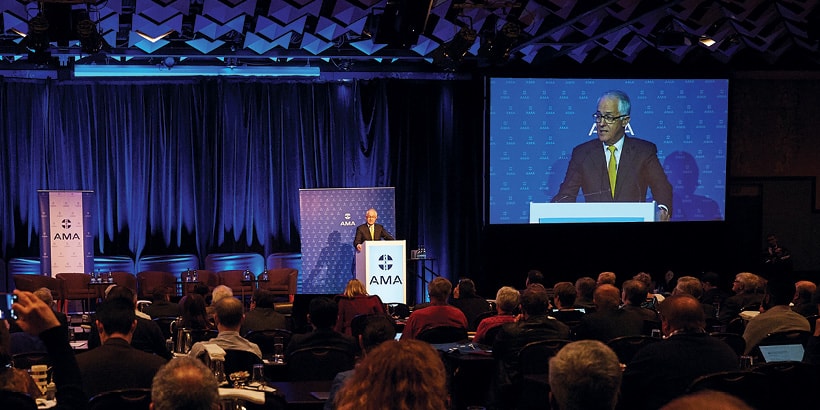
AMA National Conference
July 3, 2017
Mandatory reporting rules under the microscope
July 3, 2017FEATURE
Here’s what you and your patients need to know about recent changes to rules regarding medicinal cannabis.
THE SENATE voted in June to fasttrack access to medicinal cannabis for terminally ill patients.
The TGA currently has two access pathways in which Australian medical practitioners may prescribe cannabinoid medicines. In order to prescribe medicinal cannabis products, doctors must apply to become authorised prescribers or gain access through the Special Access Scheme (SAS).
Both of these pathways require the medicinal practitioner to apply for and wait for approval from the TGA prior to being able to prescribe.
SAS Category A does not require prior approval, but is a process where the medical practitioner notifies the TGA they have prescribed the medicines. Currently any unregistered therapeutic goods can potentially be supplied via the SAS Category A process, except for:
• Prohibited substances in Schedule 9 of the Poisons Standard; and
• Medicinal cannabis products.
The Di Natalie disallowance motion changes the Therapeutic Goods and Other Legislation Amendment (Narcotic Drugs) Regulation 2016 to give terminally ill patients access to medicinal cannabis products through the TGA SAS Category A process.
Category A patients are defined as ‘persons who are seriously ill with a condition from which death is reasonably likely to occur within a matter of months, or from which premature death is reasonably likely to occur in the absence of early treatment’.
To precribe medicinal cannabis to terminally ill patients, the medical practitioner completes the relevant Category A form and sends it to the supplier of the product and a copy to the TGA. This provides the supplier with the legal authority to supply the product.
AMA President, Dr Michael Gannon, indicated the AMA is disappointed with this move. Dr Gannon told media, “doctors are reluctant to prescribe medicinal cannabis. This is no different to any other new drug, new technology, new operation; we want to be assured of the safety, assured of the effectiveness.”
Despite the Federal changes, the major barrier for patients being able to access medicinal cannabis, and to medicinal practitioners being able to prescribe, is
the various state approval schemes in place. These barriers are still in place.
In NSW, SAS Category A still requires an Australian doctor to write prescription/s for S8 and S4 substances and give them to the patient. To do this the doctor would still need a prior NSW authority, except for S4 cannabidiol.
For S4 cannabidiol imported under SAS Cat A, no NSW authority is required.
When patients ask…
For patients with a terminal illness – any medical practitioner can provide a certificate in accordance with the Compassionate Use Scheme. This is not a prescription or an endorsement of the use of cannabis, it is simply a certification which can be used to avoid prosecution.
While patients have been led to believe that cannabis is now freely available, the NSW Government requirements (as supported by the AMA) stipulate that a doctor must be an approved prescriber. This requires (among other things) specialised expertise and scope of practice. We recommend doctors advise patients if they are not authorised to prescribe.

